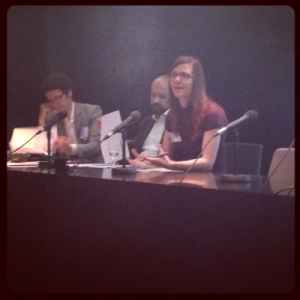When discussing innovation, we often think about grand technological breakthroughs. Yet, at the same time, other sectors, such as the creative industries, are often praised for their innovative capabilities. What is innovation in a sector that is defined by a continuous development of new paintings, websites, plays, marketing campaigns or games? What does innovation mean in a research project entitled cultures of innovation in the creative industries (CICI)?
One of CICI’s sub-projects aims to unravel how creative entrepreneurs see innovation, and how innovation occurs within the creative industries. Ongoing research on this sub-project has been presented on the XIIIth International Conference on Arts and Cultural Management (AIMAC) in Aix-en-Provence and Marseille between June 26th – July 1, 2015.
In this presentation, we have sought to refine the conceptualization of innovation specifically for the creative and cultural industries. We have done so by looking closely at the definitions, experiences and interpretations of innovation by creative workers in- and outside their particular field of work. Our findings are based on an analysis of 25 in-depth interviews. Our take on innovation hopes to do justice to the manifold practices of creative industries entrepreneurs. A significant finding of our research is that the overall conception of innovation among workers in the creative industries is still a fairly traditional notion of technological improvement and the adaption of groundbreaking technologies to the manufacturing of new products. Another often heard example was that of 3D printing. Such an invention can be used as input in the creative process, generating innovative outputs. Thus, several of our respondents tried to synthesize existing common notions of innovation with their own working practices. Nevertheless, many also dismissed such linear models of innovation and focus much more on the exceptional nature of their specific creative industry. Here, the focus was rather on ‘small’ innovations inherent to creative work. Similarly, while rejecting the idea of being specifically innovative individuals, several creative workers saw their work as innovative in a self-evident way. Innovation is part of their everyday work. In addition to traditional ideas of (technological) innovation, our respondents referred to social and communicative effects of innovation. Here, innovation is only of value if it has a wider social or societal effect, in a sense that it should have an impact on the generation of a stronger community, a better society, a sustainable environment and an overall improvement of the quality of life. This holds for innovations in products as well as in services. Nonetheless, in all cases, it has become clear how the creative workers in this study embed their own work within the economic and social networks of their trade: something is innovative in one specific sector, for one specific client or for one specific artist. It is innovative within a specific field.

